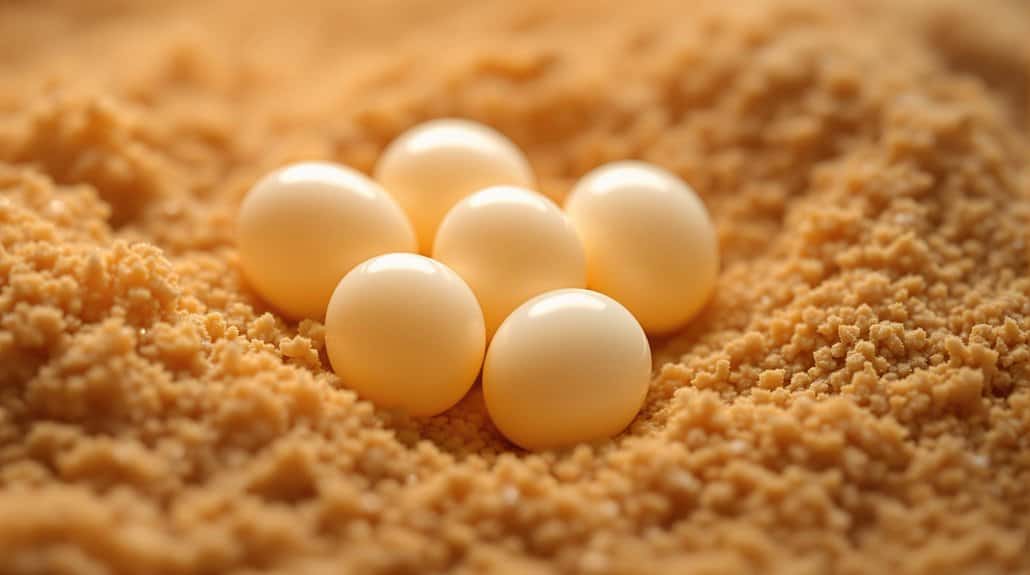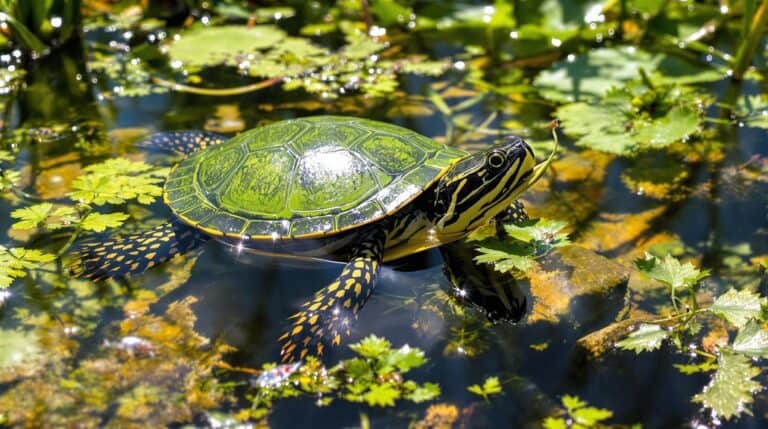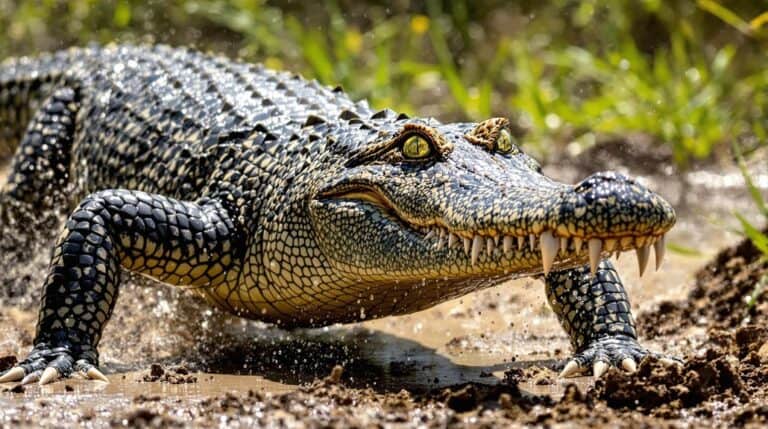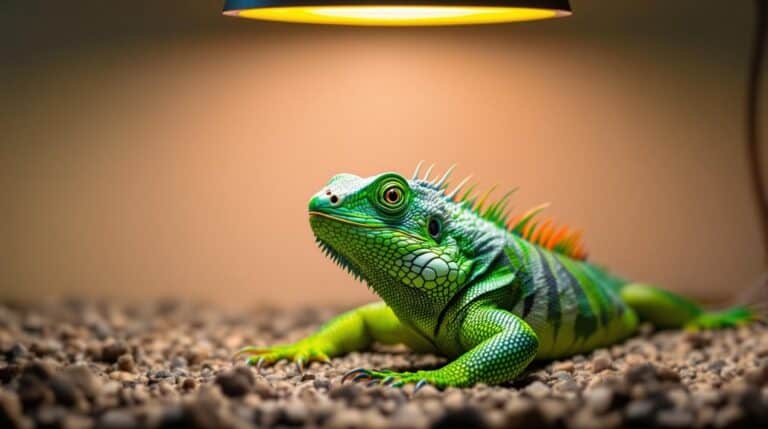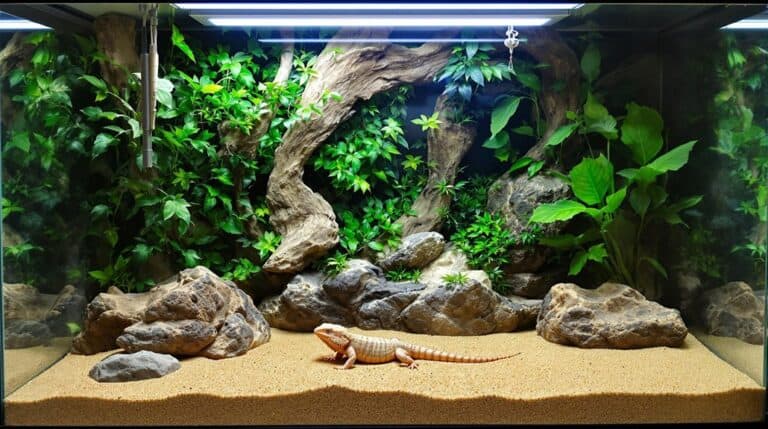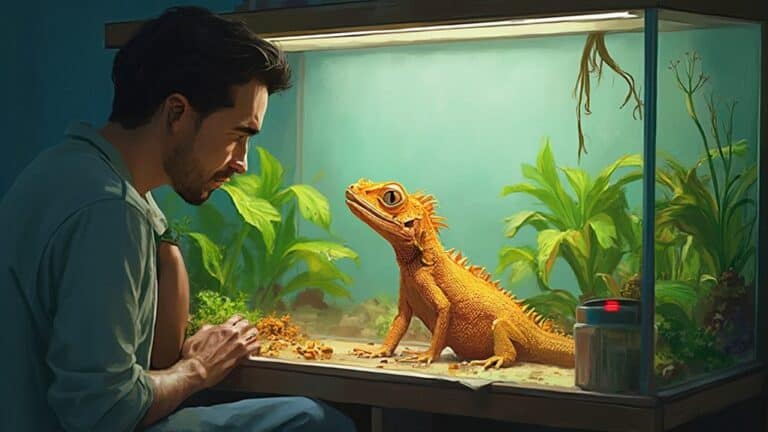Bearded Dragon Egg Temperature
Hey there, future dragon keeper! To hatch your bearded dragon eggs successfully, you’ll want to keep the temperature cozy between 84°F and 88°F, like a warm hug on a chilly day! Too hot—over 90°F—and you might end up with sad, sick embryos, which is just a bummer. Also, keeping humidity around 70-80% is essential to avoid any moldy mishaps. Think of it as finding the right playlist for a party—everyone’s gotta vibe together! So, grab your incubator gear, and let’s make some egg-cellent hatchlings! Stick around, and you’ll uncover even more fun facts.
Table of Contents
Key Takeaways
- The optimal incubation temperature for bearded dragon eggs is between 84°F to 88°F (29°C to 31°C).
- Temperatures above 90°F can lead to embryo mortality or defects.
- Minor fluctuations of 2-3 degrees from the optimal range are acceptable.
- Incubation temperature influences hatchling health and sex determination.
- Consistent monitoring is essential to maintain the ideal temperature for successful hatching.
Ideal Temperature Range

When it comes to incubating bearded dragon eggs, nailing down the perfect temperature range is essential. You wanna keep those little guys cozy, right? The magic numbers are between 84°F and 88°F (29°C to 31°C). Think of it like a warm hug for those eggs! A little wiggle room of 2 or 3 degrees is fine, but if it gets too hot—like above 90°F—you could be in trouble. Yikes!
Too much heat can be a real party pooper, leading to embryo mortality or even birth defects. No one wants that! The good news, though, is that with ideal incubation, those eggs usually hatch in about 60 days. It’s like waiting for a surprise party! Additionally, maintaining the right temperature during incubation helps ensure that the hatchlings are healthy and develop properly, as proper heating is crucial for hatchling health. It’s also important to keep the humidity around 80% humidity to further support successful hatching.
Now, temperature fluctuations are okay, but let’s keep them to a minimum. Imagine trying to nap while someone’s blasting music—no thanks! And while cooler temperatures can make for speedy growth, hotter ones create bold little dragons. So, find that sweet spot and hold onto it! Your bearded dragons will thank you, and you’ll be the proud parent of some lively little lizards soon. Let’s make it happen!
Humidity Considerations
Maintaining the right humidity for bearded dragon egg incubation is just as vital as keeping the temperature in check. If you want those little hatchlings to thrive, humidity control is key! Let’s explore some important tips for keeping that moisture just right:
- Aim for 70-80% humidity. This helps prevent dehydration and unwanted mold!
- Use a hygrometer. It’s your best friend for humidity testing—check it daily!
- Pick the right substrate. Vermiculite or perlite works wonders; avoid sand or soil—yikes!
- Wipe away condensation. No one wants water droplets plopping onto the eggs!
Keeping humidity levels consistent is essential. Too high, and you’ve got a mold party; too low, and your eggs might just dry out. It’s like being Goldilocks—everything needs to be “just right!” Remember, small adjustments can make a big difference, so keep an eye on those humidity levels. With a little care, you’ll create a cozy, healthy environment for those little bearded dragons to grow into the amazing creatures they’re meant to be! Happy incubating! Additionally, maintaining the right humidity is crucial for successful hatching, as ambient humidity should average between 30-60% for optimal health in bearded dragons. To help achieve this, monitoring humidity levels throughout the incubation process is essential to ensure the eggs develop properly.
Incubation Equipment Needed

To guarantee successful incubation of bearded dragon eggs, having the right equipment is essential. It’s like setting up a cozy little hotel for your eggs! You’ll need to pick the right incubator types, ensuring it’s spacious enough for your precious cargo. Some folks use small reptile incubators, while others go big with modified drinks refrigerators. It’s also crucial to maintain optimal hatching temperature to ensure the best conditions for your eggs. Additionally, understanding the temperature and humidity requirements is vital for successful hatching.
Here’s a handy table to keep things straight:
| Equipment | Purpose | Notes |
|---|---|---|
| Incubator | Maintains temperature | Look for digital controls! |
| Thermostat | Regulates heat sources | Essential for temperature regulation! |
| Incubation Medium | Supports eggs during incubation | Use sterile vermiculite or sphagnum moss! |
| Hygrometer | Monitors humidity levels | Keep it comfy inside! |
| Candling Tool | Observes embryo development | Peek without disturbing!
Egg Handling Practices
Proper egg handling practices are essential for ensuring the health and viability of bearded dragon eggs. Think of it as a delicate dance! When it comes to egg retrieval, you want to be as gentle as a feather floating on a breeze. Here are some tips to keep those little embryos safe and sound:
- Dig with Care: Use your hands or a plastic spoon, and start at the corners of the lay box. Those sneaky eggs love to hide there!
- No Topsy-Turvy: Never rotate or turn the eggs. You wouldn’t want to disturb a cozy dream, right?
- Gentle Touch: Handle those eggs like they’re made of glass. Rough handling is a no-go! Additionally, maintaining the right incubation temperature is crucial for the development of healthy hatchlings. Remember, eggs take about 40-90 days to hatch, so patience is key during this period!
- Damp, Not Wet: Place the eggs in a container with damp vermiculite. It should clump when you squeeze it, not drip like a leaky faucet.
Effects of Temperature on Sex

While many may not realize it, the temperature at which bearded dragon eggs are incubated plays a critical role in determining their sex. Isn’t that wild? If you keep those eggs at a cozy 28°C, you’re likely to get some dashing little males. But crank it up to over 32°C, and those genetic males (ZZ) can actually turn into females! Talk about a surprise party!
This temperature magic works through something called temperature thresholds. It’s like a secret code—too hot, and the genetic pathways take a twist, leading to female development. The timing matters too; the switch happens during specific stages of their growth. Thermal overrides may confer survival benefits in fluctuating environments, showcasing how adaptable these creatures can be. Isn’t nature just full of surprises? Temperature sensitivity may confer survival benefits in fluctuating environments, showcasing how adaptable these creatures can be.
Now, imagine if we had the same ability to change things up based on our environment! Those temperature-dependent females can be super fertile and even show off bold behaviors. With global temperatures rising, we might see more of these fabulous female dragons strutting their stuff. So, next time you think about bearded dragons, remember, it’s not just about genetics; temperature plays a starring role in this wild world of sex determination!
Growth and Behavior Influences
The fascinating interplay of temperature not only determines the sex of bearded dragon hatchlings but also greatly influences their growth and behavior. Who knew that a little heat could pack such a punch? When eggs incubate at just the right temperature, amazing things happen!
Here are four fun facts about how temperature impacts our scaly friends:
- Medium incubation temperatures boost metabolic enzyme activities, leading to healthier hatchlings.
- Hatchlings from cooler eggs might forage better later on—so, they can be little food detectives!
- Those cozy medium temperatures give hatchlings better locomotion and even a quicker righting response.
- Higher temperatures can make them speedy swimmers, but the best performance often comes from that perfect middle ground. Additionally, hatchling body mass varies by incubation temperature, with medium temperatures yielding the heaviest hatchlings. Furthermore, research shows that egg incubation temperature significantly affects post-hatching phenotypes, influencing growth rates and foraging behavior.
It’s all about balance! The behavioral performance correlation with metabolic enzyme activities shows how essential temperature is for these little guys. By choosing the right temperatures during incubation, we can help them grow strong, smart, and ready to explore their world. Let’s give a cheer for temperature—it’s the unsung hero of bearded dragon development!
Nesting Requirements for Females

Creating an ideal nesting environment for female bearded dragons is essential for their reproductive success. Imagine setting up a cozy little spa for her! First, choose a plastic container that’s roomy enough for her to wiggle around in. For substrate preferences, go for something like ProRep Spider Life or Lucky Reptile Hatchrite. It should be moist but not soggy—think of a perfectly damp sponge, not a waterlogged mess!
You’ll want to fill the container with a few inches of this fabulous substrate. This is where her nesting behaviors come into play as she digs and lays her eggs. Keeping her stress-free is super important, so make sure she’s the only queen in her enclosure, away from other dragons. It’s also crucial to remember that incubation temperature can significantly affect the sex of the hatchlings, so be mindful of the conditions after her eggs are laid.
Also, a clear container lets you peek in without bugging her too much! Check for her laying and burying those precious eggs. It’s like a secret treasure hunt! Once she’s done, gently locate those eggs and get ready for the next exciting step. Your female deserves a fantastic nesting experience, and it’s all in your hands!
Monitoring Egg Conditions
Monitoring egg conditions is essential for ensuring the successful development of bearded dragon embryos. You want these little guys to thrive, right? So, let’s get into the nitty-gritty! Keeping an eye on temperature and humidity is super important. Here are some egg candling techniques and substrate preparation tips to help you out:
- Temperature checks: Keep it cozy between 84-88°F (29-31°C). Too hot or too cold? No way!
- Humidity levels: Aim for 75-80% humidity. A hygrometer is your best friend here.
- Regular candling: Peek inside the eggs every week! You’ll see color changes and maybe even size increases—how exciting!
- Clean substrate: Use sterile materials to prevent mold. Dusting with anti-fungal powder? Genius!
With daily checks, you’ll spot any cracks or funky smells before they become problems. Remember, stable conditions are key! Optimal temperature will help ensure healthy embryos develop properly. Additionally, maintaining proper humidity levels is crucial for ensuring successful hatching. Keep your incubator on lockdown, and those little dragons will be ready to rock their world in no time. Monitoring isn’t just a chore; it’s your ticket to hatching happiness!
Hatching Process Overview

When it comes to hatching bearded dragon eggs, getting the conditions just right is essential for the little ones’ successful emergence. It’s like preparing a cozy home for a tiny dragon! The hatching timeline usually takes about 60 days, but it can vary from 55 to 75 days, depending on the temperature. Keeping that temperature between 84-88°F (29-31°C) is super important.
As the days tick by, you’ll face some incubation challenges. Humidity should hover around 75-80%, and I can’t stress enough how vital it is to leave the eggs alone. No turning or rotating them, please!
When hatching time finally arrives, you might see condensation on the eggs—this is totally normal. The baby dragons will poke their way out using their egg tooth, and watching this magical moment feels like witnessing a superhero’s debut!
Just remember, it’s best to keep the hatchlings undisturbed until they’re fully out. They might have a little yolk sack hanging on, but don’t worry, it’ll drop off soon. Stay patient and enjoy the thrill of new life—your little dragons are on their way!
Post-Hatching Care Tips
Caring for your newly hatched bearded dragons is essential in those initial days. These little guys might seem out of it right after hatching, like they just woke up from a nap! Here’s how to help them thrive:
- Leave them be: Let your hatchlings chill in the incubator for 24-48 hours. They need time to recover from their grand entrance!
- Set the stage: Keep humidity and temperature cozy, just like when they were incubating. They’ll feel right at home! Remember, it’s crucial to maintain a warm, humid environment for their well-being. Additionally, bearded dragons require a thermal gradient in their habitat to thrive.
- Hold off on feeding: Resist the urge to feed them for 48 hours. They need to regain their energy first, just like waiting for breakfast after a sleepover!
- Create a safe space: Use a 20-gallon aquarium with soft substrates and basking spots. This helps them explore and bask comfortably.
Monitor their hatchling behavior closely. When you start your feeding schedule, offer them chopped greens and insects daily. Remember, a happy bearded dragon means a happy you! With a little patience, you’ll have energetic little companions ready to rule their world!
Conclusion
So, there you have it! With the right temperature, a sprinkle of humidity, and some TLC, your bearded dragon eggs are on their way to becoming adorable little hatchlings. Just imagine those tiny, wiggly babies making their grand entrance! It’s like waiting for a surprise party, but way cuter. Remember, it’s all about creating a cozy nest for your scaly friends. Happy hatching, and may your little dragons fill your heart with joy and your home with laughter!

